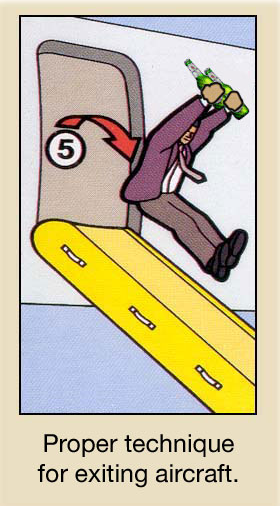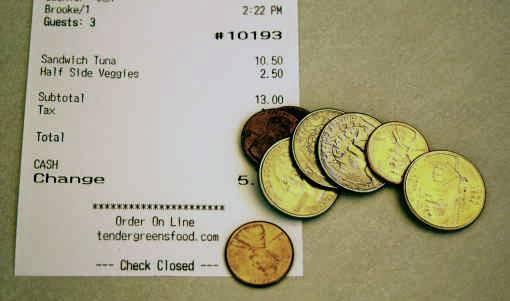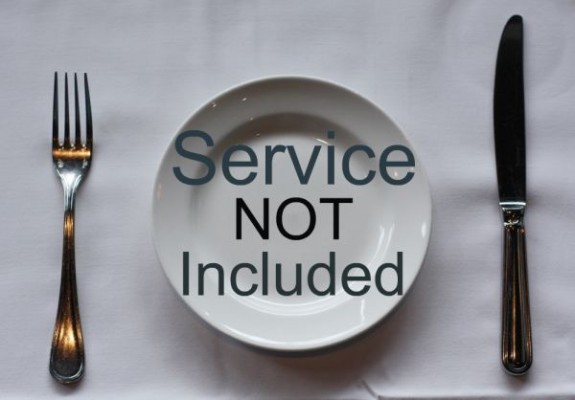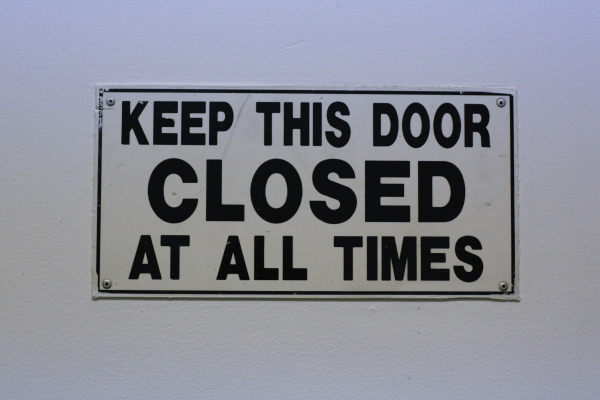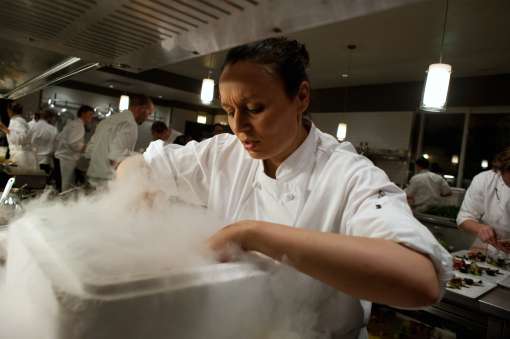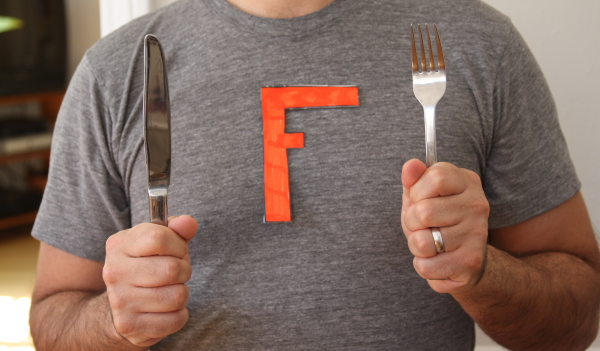
“I’m craving American food!” said no one, ever.
I’ve lived in the US my entire life and never have I heard anyone exclaim such a thing. But now that I’ve eaten at Zingerman’s Roadhouse—an Ann Arbor, Michigan restaurant that celebrates the culinary traditions and artisan food makers of the United States–I’ll be saying that phrase a lot. Zingerman’s Roadhouse makes me proud to be an American and hungry for its regional specialties.
Where else can a discerning food lover enjoy tasty buttermilk fried chicken, savory Southern Carolina BBQ, sweet Hawaiian Pineapple Chicken Salad, meaty Maryland crab cakes and earthy-sweet Pennsylvania Dutch Creamed corn in one glorious location?
One trip to the Roadhouse and you’ll save yourself a three thousand mile cross-country culinary tour. The masterminds behind Zingerman’s Roadhouse studied the nation’s gastronomic traditions with the care of scholars and created a menu that celebrates the nation’s best dishes all in one central locale.

Zingerman’s puts Ann Arbor on the culinary map
Zingerman’s may have started in 1982 as solitary delicatessen dedicated to serving great sandwiches, but it has since grown to include six other establishments that consist of a bakehouse, creamery, training branch, culinary press, and an impressive mail-order artisan food company. The Roadhouse—the seventh establishment in the Zingerman’s Community of Businesses—is a tour de force where elements from all of the culinary outposts can come together.
Welcome to the Roadhouse

Enter the Roadhouse and Zingerman’s friendly staff is always happy to help. Past the blur of the busy open kitchen, beyond the colorful signage announcing daily specials and the glass cases filled with vintage salt and pepper shakers, you’ll find diners tucked away in backroom booths, bellied up to the bar or lounging outside at tables adjacent to the barbecue pit.
My husband and I sat at the bar so that we could study the names of the Michigan-local brew taps. We were impressed by the extensive selection of rare Bourbons, jars of house made maraschino cherries and containers filled with freshly squeezed juices. Unlike many restaurants across our fair country, no mixers are used and only fresh ingredients are stocked behind the bar.
Our barkeep, Adam, greeted us with an uncommon enthusiasm and excited menu descriptions that had us wishing we could order everything. Adam told us how Roadhouse Chef/Partner, Alex Young had such a commitment to fresh ingredients he started a three-acre organic farm to supply the restaurant with all its seasonal produce. Located in Dexter, Michigan, the Roadhouse’s dedicated farm produces lettuces, radishes, scapes, morels, asparagus, and almost thirty different heirloom varieties of tomatoes for the restaurant. Roadhouse food wastes are composted and trucked to the farm to improve the health of the earth.
While still mulling over the menu choices, Adam presented my husband and I with a sample of the Roadhouse’s famous barbeque. On the plate were mouthfuls of pulled pork topped with three different sauces: earthy, eastern North Carolina vinegar, sweet Memphis tomato, and spicy South Carolina mustard. Adam explained how Ed Mitchell, a North Carolina native and pit master, moved to Michigan to teach the Zingerman’s crew how to smoke free-range, heirloom-breed hogs over oak for over fourteen hours and prepare the meat southern-style.
To drink, we ordered the Jolly Pumpkin “La Roja, a sour amber craft beer that gets its tart, food friendly acidity from naturally occurring yeasts found in the brewery. Within seconds of sampling the beer, a smiling server named Brian dashed over to enthusiastically approve of our beer choice.
“Cool!” the young man with the long side burns exclaimed with unsolicited enthusiasm. “You guys picked the best beer we have!”

We paired our sour beer with Zingerman’s Chesapeake Bay Crab Cakes ($12.50). More Maryland jumbo lump blue crab meat than anything else, the cake’s sweet flavor was enhanced by a dollop of Zingerman’s ultimate tartar sauce*.
While waiting for our next course, the bartender poured us a sample of Zaison, a Belgian styled beer Jason Spaulding, the Roadhouse’s bar manager (and former New Holland Brewery’s brewmaster), created for the restaurant. As we enjoyed the beer’s zesty flavors and light style we had the good fortune of meeting Jason, and happily listened as he explained how he came to make the food-centric, single-batch brew with orange peel and black pepper.

If it isn’t clear yet that the Roadhouse isn’t your typical restaurant, it’s time to point out an important aspect that many people don’t realize is a key to Zingerman’s success: an unrivaled commitment to service. From the minute you walk through the door, every employee goes out of their way to make sure that they can help give you the best possible experience. Want to have creamed corn instead of coleslaw on your entrée? Sure. Want a behind-the-scenes look at what’s going on inside Zingerman’s Roadshow (a free standing take out “trailer” designed for speedy breakfast, lunch and dinner to-go orders)? Come on inside! At Zingerman’s, “no” is not in the employee’s vocabulary.
In preparation for the arrival of our entrees, we ordered the Dragon’s Milk Beer. This gloriously dark and hoppy beer from Michigan, gets its vanilla and mocha flavors from being aged in bourbon barrels.

The beer paired perfectly with the sweet, Niman Ranch pork ribs ($19 for a half rack). Cooked for nine hours in Alex’s Red Rage Tomato BBQ sauce, the ribs were served on—thanks to Zingerman’s yes-we-can attitude–a generous portion of South Carolina corn grits and mustard coleslaw. The sweet and meaty ribs were fall-off-the-bone tender and chewy from the long, slow cook. The grainy texture of the grits and the sweet crunch of the coleslaw made the title “side dish” seem like an insult—these were must-have bites that required our full attention.

We enjoyed the Southern Carolina mustard BBQ pork entrée ($11.50) with Pennsylvania Dutch Creamed Corn and Southern-style braised collard greens. The mustard vinegar sauce (a favorite in western South Carolina) enhanced the moist and flavorful pork without overpowering the meat’s natural flavors. The earthy sweetness and playful texture of the creamed corn played perfectly against the tart collard greens.
Had we more room for food, we would have ordered the Buttermilk-fried free range chicken with mashed potatoes, gravy and coleslaw. But we had enjoyed that dish and many others on a previous visit, and thought better to save room for dessert.

Thank god we did, because the Roadhouse brownie sundae is not to be missed. Zingerman’s bakehouse brownies are crave-worthy on their own. But served warm, with the Creamery’s fresh vanilla ice cream, a perfect amount of hot fudge and a house-made maraschino cherry—we were in heaven.
As a fan of one of America’s greatest liquors—Bourbon—I decided to try a Roadhouse specialty cocktail. . A perfect American cocktail to end a perfectly American meal, the Kentucky Bed Warmer is made with Knob Creek and Blenheim ginger ale. It’s a delightful tippler that aids digestion and makes you smile.
It’s only been a day since I visited the Roadhouse, but I can already feel a new kind of craving coming on. I turn to my husband with a smile.
“Hey honey, guess what I’m craving…”

Kentucky Bed Warmer
From Zingerman’s Roadhouse
2 ounces Knob Creek
1 ounce Orange Curacao
2 dashes Orange bitters
Blenheim ginger ale
Orange zest
Add Knob Creek, Orange Curacao and bitters to a Boston shaker filled with ice. Stir until chilled. Add to bucket glass and fill with Blenheim ginger ale. Top with orange zest and serve.
*Zingerman’s Tartar Sauce is a delicious blend of mayo, Dijon mustard, minced cornichon, minced red onion, diced plum tomatoes, Quebec cider vinegar and sugar. Try making your own version at home!
NOTE: Thank you so much to the generous people at FoodBuzz.com for their support of this blog and helping fund this food adventure.


